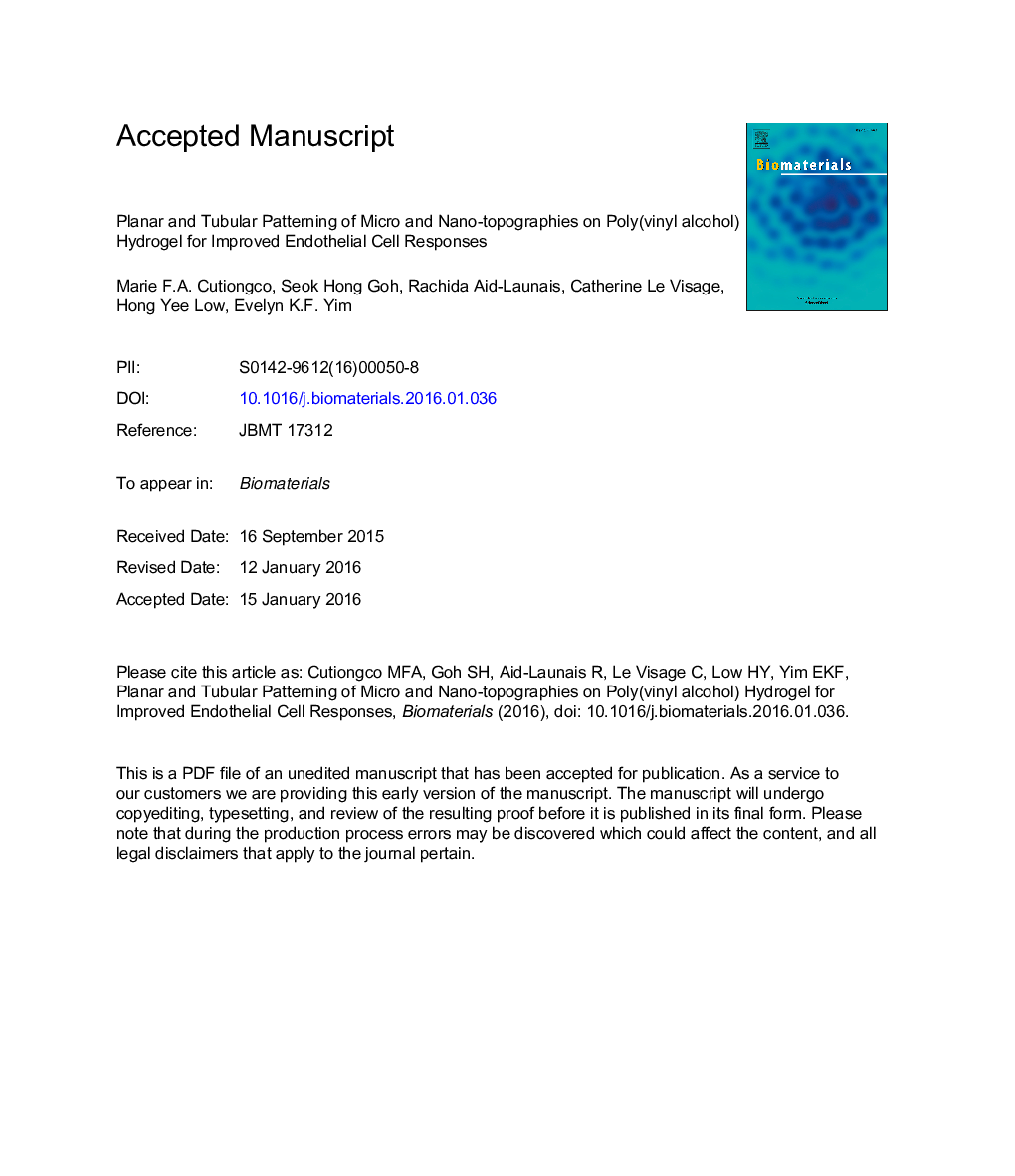| Article ID | Journal | Published Year | Pages | File Type |
|---|---|---|---|---|
| 6485088 | Biomaterials | 2016 | 47 Pages |
Abstract
Poly(vinyl alcohol) hydrogel (PVA) is a widely used material for biomedical devices, yet there is a need to enhance its biological functionality for in vitro and in vivo vascular application. Significance of surface topography in modulating cellular behaviour is increasingly evident. However, hydrogel patterning remains challenging. Using a casting method, planar PVA were patterned with micro-sized features. To achieve higher patterning resolution, nanoimprint lithography with high pressure and temperature was used. In vitro experiment showed enhanced human endothelial cell (EC) density and adhesion on patterned PVA. Additional chemical modification via nitrogen gas plasma on patterned PVA further improved EC density and adhesion. Only EC monolayer grown on plasma modified PVA with 2 μm gratings and 1.8 μm concave lens exhibited expression of vascular endothelial cadherin, indicating EC functionality. Patterning of the luminal surface of tubular hydrogels is not widely explored. The study presents the first method for simultaneous tubular molding and luminal surface patterning of hydrogel. PVA graft with 2 μm gratings showed patency and endothelialization, while unpatterned grafts were occluded after 20 days in rat aorta. The reproducible, high yield and high-fidelity methods enable planar and tubular patterning of PVA and other hydrogels to be used for biomedical applications.
Related Topics
Physical Sciences and Engineering
Chemical Engineering
Bioengineering
Authors
Marie F.A. Cutiongco, Seok Hong Goh, Rachida Aid-Launais, Catherine Le Visage, Hong Yee Low, Evelyn K.F. Yim,
